|
|
|
| Rolling My Own After much delay I finally began the prototype phase of adding a motor drive unit to the Legacy mill. There are two reasons for "rolling my own" motor drive for the Legacy. The first is due to the high cost of a motor drive from the makers of the mill, it sells for about $800 which I think is a bit high for what it does. The second is that it doesn't take very many cranks of the handle to realize how beneficial this feature would be. One can buy the same or similar parts used by the manufacturer and create your own motor drive system, retail cost for these parts is about $500. Consider this, the system supplied by Legacy is also a kit, as long as one knows what to buy, there would be little risk in buying the parts yourself. While $500 for kit parts is significantly less than the $800 for the system the manufacturer sells I think the function can be done cheaper yet. |
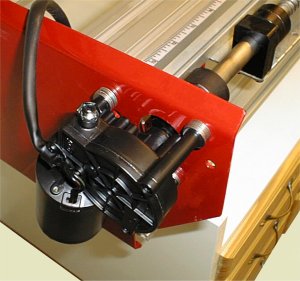 |
Common DC Motor I've looked into other motor options as well. This is a prototype of the drive mechanism I am going to try first. The drive unit is an automotive windshield wiper motor which has a gear reduction drive train. This motor will run up to 55rpm. This speed is okay but I'd like to go at least 100rpm to be a little more productive, the Legacy motor is 109rpm. This type of setup seems like it would work out quite well, DC motors are easy to control and it seems to have all the torque one would ever need. It would be possible to increase the speed using sprockets, pulleys, or gears. The torque would go down as a result but it should still be adequate. While it would also be possible to build a variable speed control for this motor I doubt there is any real need for any more than four fixed speeds. |
| After running the motor shown for
periods of 30 minutes or so the motor becomes quite warm to the touch. I will be
installing a fan to cool this one down. This motor will dissipate about 40 watts when
running, the motor sold by Legacy would be about the same so I believe this issue would
exist with that unit as well. I had a very similar situation for the feed motor on my
thickness sander, a fan blowing on the motor works quite well. To make this method fully functional a control system would need to be built along with some limit switches and mounts. |
|
| Table Feed Drive An option that would probably require less engineering is to use a table feed drive unit designed to move metal working machine cross-slide tables. These units have limit switches already part of the package, variable speed in the proper range, a skew speed, direction control, and they fit a 5/8" shaft! these units sell for between $200 to $500 and I believe would be easier and faster to fit onto the Legacy than the other options I've listed. The only additional work needed to use this system would be to add a motor coupler / shaft and a way to position the left / right limits. The controls would be at the drive unit, this would be less convenient than the OEM solution. |
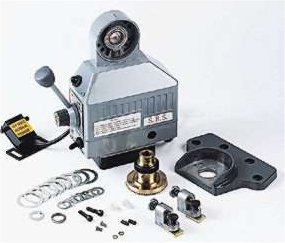 |
| Control System As mentioned, if the some type of system may be needed to be devised to control the motor depending upon which system one would wish to use. Below is a block diagram of a general method for accomplishing this. The exact nature of what and how it is done would depend upon the drive unit. It would be possible to make an infinitely variable speed control but that is overkill for the application. I think something like four fixed speeds would be more than adequate. In previous experiments I've done about 200rpm on the shaft is about as fast as the Legacy gear train could go, about 30rpm is as slow as you would ever want to go. A sample schematic of a control system for a DC motor is available upon request. |
 |
 |
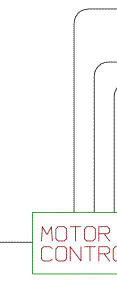 |
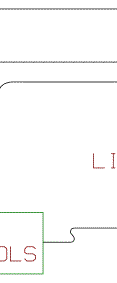 |
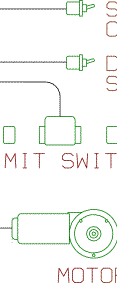 |
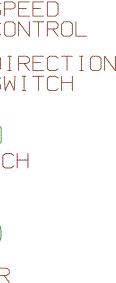 |
| Further Ruminations If one were sufficiently knowledgeable and inclined, it would be possible to build an ornamental mill that would be much easier to use and more flexible than the any model of the Legacy. The type of machine I envision would have a dual motor drive system, one for the carriage and another for the lathe spindle. With this type of system it would still be possible to do all the things the 1000ex does at present but it could accomplish it without any manual gear changes (and the problems associated with them) and would eliminate the need for either of the two additional reduction gear sets as well. The system could be controlled manually with simple switches and could include some more sophisticated commands as well. With the addition of an interface device like a PDA the functionality could be increased greatly. This is the type of motor system I would have been willing to pay $800 more for. Maybe that is what I will eventually end up building - someday. Errata |